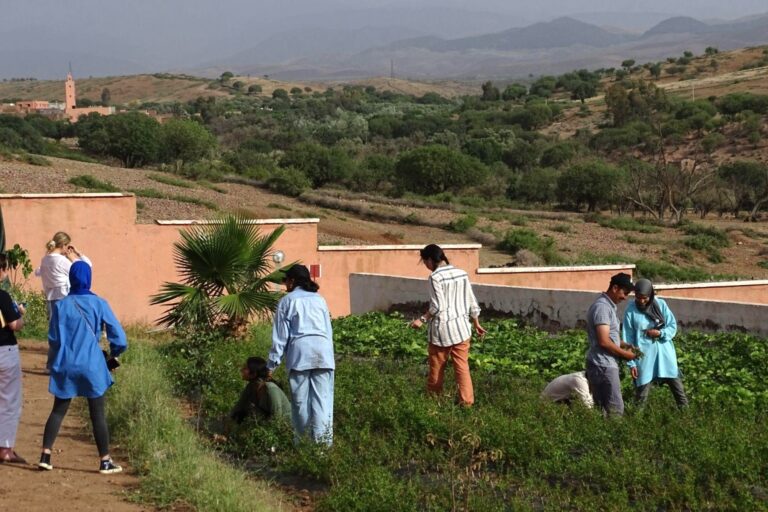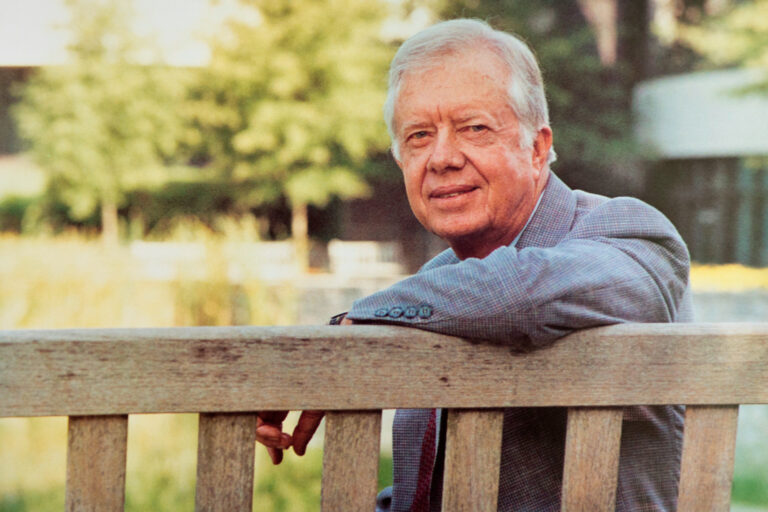(*Image by quapan via flickr.com)
In this two-part series, author Alex Simon discusses the evolution and increasingly fragmented nature of Sunni tribalism in Iraq from the era of Ottoman occupation through the rise of the so-called Islamic State, and its implications for the future of the Iraqi polity. Read Part I here.
Alex Simon
Part II:
Iraqi tribes and the Caliphate
By late 2012, Iraq’s tribal landscape was shot through with the polarization and fragmentation accrued over decades of repression and cooptation by a range of outside actors. These fault-lines would only deepen when, in late 2012, frustrations toward Baghdad erupted into a protest movement that swept through Sunni-majority territories country-wide. Over the course of 2013, harsh government repression helped turn the protests into an armed insurgency increasingly dominated by a resurgent AQI. By the time the latter had formally rebranded itself as the Islamic State and seized territory in northern, western, and central Iraq—culminating in the June 2014 seizure of Mosul, Iraq’s second largest city—Sunni tribal actors faced a stark decision between falling into line with the jihadists or casting their lot with Baghdad.[1]
For many, the choice was clear: Baghdad had spent the past five years persecuting Sunnis and was growing increasingly reliant on Iran-backed, overtly sectarian Shia militias to achieve battlefield gains. The bitter experience of the Sahwa and its downfall made renewed partnership with the government a hard sell. As one veteran Iraqi analyst explains, “the tribes fighting against [IS] have learned from past experience: they receive lots of promises from Baghdad, from the US, but then the US left them to their fate [under Maliki].”[2] Moreover, the central government—even after Maliki’s resignation and replacement with the more moderate Haidar al-Abadi in August 2014—has remained slow to empower those tribes inclined to confront IS. Such was the case of the Albu Nimr, a historically anti-AQI tribe in Anbar province, whose members were slaughtered by the hundreds when in fall 2014 they pushed back against IS rule. One Albu Nimr sheikh said at the time: “The government abandoned us…We asked them many times for weapons but they gave us only promises. We gave the government co-ordinates for airstrikes, but they didn’t keep their word.”[3]
Meanwhile, IS—while widely resented for its brutality—at least remains a known quantity. Those who submit to its rule are allowed to continue their lives, perhaps with a degree of independence exceeding that which they were afforded under the government—a particularly tempting prospect for tribal figures whose autonomy and prestige suffered under the Maliki government. IS has appealed explicitly to this sentiment. In the aforementioned propaganda video, for instance, one tribal sheikh addresses the room: “In the time of restrictions and contempt [under Maliki], any sheikh among us who wanted to travel was afraid to carry his pistol to defend himself. But today we walk upright and with pride.” This invocation of tribal autonomy—and its denigration under Maliki—reflects the fact that part of IS’s appeal to tribal Sunnis is its promise of greater status than that which they enjoyed under the previous regime.
Those who resist, on the other hand, are punished brutally. The cruelest treatment is reserved for former Sahwa who fail to accept renewed IS domination, as with the Albu Nimr. This incentive structure places would-be IS opponents among the Sunni tribes in a near impossible position: the practical benefits of alliance with Baghdad are dubious, and the costs likely to be high in terms of both IS retaliation and lost legitimacy among Sunni constituencies who increasingly view the Iraqi government as a narrowly sectarian Iranian agent.
These dynamics have not, however, prevented a number of tribal factions from aligning themselves with Baghdad when doing so appears as their best chance for survival or personal advancement. Particularly striking in this regard are tribal relations with the so-called al-Hashd al-Shaabi or Popular Mobilization, an umbrella designation for predominantly Shia paramilitaries who since 2014 have earned a reputation for both battlefield effectiveness and sectarian atrocities in the anti-IS fight.[4] Despite Iraq’s Sunni population broadly reviling the militias, some tribal actors have shown a willingness to tolerate, endorse, or even fight alongside them.
One dramatic example of this phenomenon came in the town of al-Alam in Salahedin Province. In the effort to evict IS from the town in early 2015, Sunnis from the Jubbour tribe aligned themselves with Asa’ib Ahl al-Haq, one of the largest, longest standing and most notoriously vicious of Iraq’s Shia militias. The alliance went as far as the Sunni Jubbour announcing their own subsidiary unit of the militia, referenced by some as Asa’ib al-Alam.[5] Elsewhere, including around Anbar’s provincial capital of Ramadi (from which IS was uprooted in December 2015), tribal figures have publicly welcomed the Hashd and voiced their willingness to work alongside it.[6]
In such cases, cooperation between Sunni tribesmen and Shia paramilitaries has been framed as a nationalist, cross-sectarian response to the IS threat; one Jubbouri Sunni from al-Alam, for instance, proclaimed: “Sunni or Shiite, there is no difference–these circumstances united Iraq… God willing, there will not be any more sectarianism.”[7] Similarly, Sheikh Naimi Kaoud of the Albu Nimr declared that the tribes of Anbar “welcome all sons of the Iraqi people who hope to defend all parts of Iraq and liberate it from the danger of Daesh,” adding that anyone who objects to the Hashd‘s participation should “free Anbar themselves.”[8]
It remains to be seen, however, whether these occasional glimpses of cross-sectarian goodwill are sustainable or, in many instances, even genuine; in any case, feelings of Iraqi solidarity surely pale in comparison to the polarization fueled not just by IS and the Hashd, but also by fresh inter- and intra-tribal divisions between those ready to work with Baghdad and those who view such cooperation as betrayal. As the above-quoted Iraqi analyst explains: “If a given leader of a given tribe chooses to support the Hashd, it doesn’t mean the whole tribe has done so. He’ll take a chunk of the tribe—his immediate family, his blood relatives. It’s not good for the tribe, it will create lasting divisions.”[9]
Sunni tribes and the Iraqi state, today and tomorrow
In this sense, the current fight against IS—including the unfolding battle for Mosul—can be viewed as yet another stage in the tribes’ long-running process of transformation and fragmentation. What is unique about this current episode, however, is the almost Hobbesian degree of chaos in which it is unfolding: the toppling of Saddam Hussein in 2003 created, for the first time since the 1800s, an Iraq devoid of any obvious single power to whom tribal leaders could look for patronage and protection—however self-serving and overbearing those might be. The Americans would step in to fill that role, but only briefly; before long the drawdown created a new vacuum in which vulnerable, disempowered tribal leaders faced a bitter choice between the jihadists and a vindictive, exclusivist central government.
In today’s still more anarchic landscape, a tribal sheikh might seek support from any of several patrons, each one seemingly weaker and less reliable than the next: when arrayed alongside the Hashd, Baghdad, Washington, the Kurds, and Sunni Arab neighbors like Jordan and Saudi Arabia, IS might plausibly claim to be the most consistent and predictable partner on offer. This constellation of mediocre options continues to pull tribal leaders and factions in competing directions, creating fresh divisions that IS has proven adept at exploiting.
These dynamics pose stark challenges for Western and Iraqi policymakers seeking to enlist Sunni tribes in the fight against IS; efforts to do so have thus far appeared ad hoc, politically sensitive and of dubious battlefield impact.[10] Yet the jihadist group’s fortunes in Iraq are clearly on the wane, and current trends indeed suggest that American and Iraqi forces will sooner or later uproot IS from Mosul and its remaining territory throughout the country. As the self-proclaimed Caliphate continues to erode, pragmatic tribal factions may well drift back into Washington and Baghdad’s orbit. This process, however, will likely unfold over the course of years rather than months, and has already incurred vast human and material costs. In the long-term, a still more daunting—and, ultimately, more important—task than enlisting Sunni tribal actors in the anti-IS fight will be engaging these same forces in the reconstruction of a ruined Iraqi state.
The Sunni Awakening and its demise under Nouri al-Maliki showed the limits of a strategy based on purchasing the loyalty of individual sheikhs, particularly in such a fractious and polarized environment. Stability in a post-IS era will thus require an institutional formula that gives tribal actors both significant on-the-ground authority and a meaningful stake in the central state. While it remains unclear how such a system might work, likely ingredients include some form of federalism with guarantees of local autonomy; a system for sharing oil revenue with resource-poor Sunni regions; the systematic incorporation of Sunnis into the armed forces, possibly through the much-discussed but never implemented framework of a National Guard;[11] and programs of transitional justice and accountability that would slow the cycle of communal score-settling that has been in almost constant motion since 2003.
While there may come a day when Iraq and its external supporters can muster the political resolve and material resources required for such measures, that day will not come soon. The partial collapse of the government in Baghdad in mid-2016 highlighted the fact that Iraq’s political edifice will continue to break down before it can eventually be rebuilt.[12] It reflected, too, the extent to which fragmentation is not limited to Iraq’s tribal sphere, but rather belongs to a more generalized unraveling of the country’s social and political fabric. Disintegration is today the stuff of Iraqi politics, whether among disunited Sunnis (tribal and otherwise), competing Kurdish factions, or a Shia community that has dissolved into a convoluted patchwork of rival militias.[13] Tomorrow’s Iraq will not resemble the nation-state that existed before 2003, but nor will it resemble the neatly partitioned federal entity about which politicians and commentators tend to fantasize. In this broader and, for now, unanswerable question about Iraq’s future, tribal dynamics form but one of many complex and fluid parts.
Alex Simon is a second-year Master of Arts Candidate at Johns Hopkins School of Advanced International Studies (SAIS), where he is concentrating in Conflict Management. He is also a consultant with Synaps, a Beirut-based start-up. He has lived and worked in Lebanon and Jordan as a researcher and analyst, including as a Fulbright Fellow, a researcher with the International Crisis Group, and a summer 2016 Fouad Ajami Fellow in Beirut. He holds a Bachelor’s degree in International Relations from Princeton University.
*Image by quapan via flickr.com (https://www.flickr.com/photos/hinkelstone/15522702841) redistributed in accordance with Creative Commons Attribution 2.0 License (see https://creativecommons.org/licenses/by/2.0/legalcode)
________________________________________________________________________________
[1] For discussion, see Ahmed Ali, “Sunni Tribal Dynamics in Fallujah and Ramadi,” Institute for the Study of War, January 9, 2014.
[2] Iraqi analyst, Interview with author, Amman, Jordan, August 2015.
[3] Orla Guerin, “Iraq: Sunni tribe ‘left for slaughter’ by Islamic State,” BBC, November 10, 2014.
[4] Ned Parker, “Special Report: After Iraqi forces take Tikrit, a wave of looting and lynching,” Reuters, April 3, 2015.
[5] W.G. Dunlop, “Iraqi Sunnis join feared Shiite militia to battle IS,” AFP, March 13, 2015.
[6] See, e.g., “Sunni tribal sheikh welcomes the participation of al-Hashd al-Shaabi in the battle to liberate Anbar,” al-Quds al-Arabi, April 12, 2015 (Arabic), www.alquds.co.uk/?p=325265.
[7] Dunlop.
[8] Al-Quds al-Arabi, April 12, 2015.
[9] Iraqi analyst, Interview.
[10] The battle to evict IS from the Sunni Arab town of Ramadi, for instance, was waged not by local Sunnis but by the Iraqi army’s elite counterterrorism unit—despite Washington’s having dispatched hundreds of troops to prepare tribal fighters for precisely this task. Matt Bradley and Ali A. Nabhan, “In Ramadi, Small Force Carried a Big Burden,” Wall Street Journal, January 8, 2016; David Alexander, “U.S. troops at Taqaddum to help Iraqis plan fight for Ramadi,” Reuters, June 12, 2015.
[11] For discussion of the National Guard concept, see Ariel I. Ahram and Frederic Wehrey, “Harnessing militia power: Lessons of the Iraqi National Guard,” Brookings, May 27, 2015.
[12] For discussion, see Emma Sky, “How the ‘Green Zone’ Helped Destroy Iraq,” Politico, May 1, 2016.
[13] For thorough analysis of the divisions afflicting Iraq’s broader Sunni, Kurdish and Shia communities, see, respectively: Renad Mansour, “The Sunni Predicament in Iraq,” Carnegie Middle East Center, March 3, 2016; “Arming Iraq’s Kurds: Fighting IS, Inviting Conflict,” International Crisis Group, 12 May 2015; and “The Militia-rization of Iraqi Politics,” King Faisal Center for Research and Islamic Studies, March 18, 2015.



